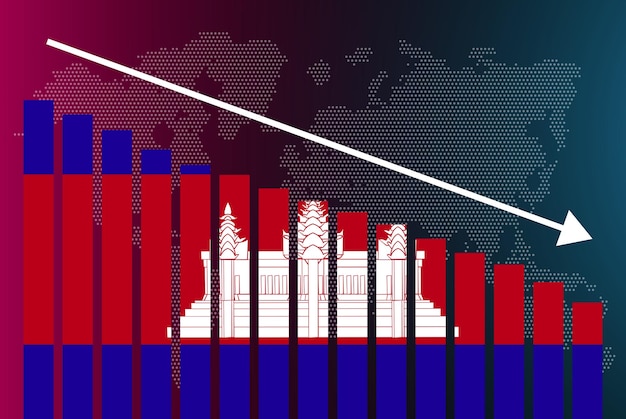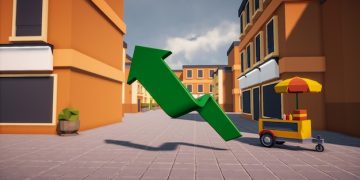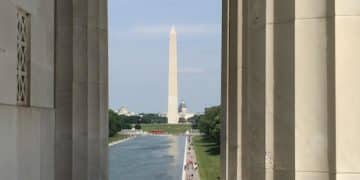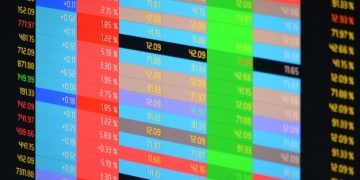Retail Sales Dip 0.5%: Is the US Economy Slowing Down?

Retail sales in the US unexpectedly decreased by 0.5%, signaling potential economic challenges and prompting concerns about a slowdown in consumer spending, the key driver of the nation’s economic growth.
The latest retail sales figures have just been released, and they’re raising eyebrows across the financial world. Retail Sales Unexpectedly Decline by 0.5%: Signs of a Slowdown? This surprising dip has sparked a flurry of analysis and speculation about the health of the US economy and the future of consumer spending.
Understanding the Unexpected Dip in Retail Sales
The recent announcement of a 0.5% decrease in retail sales has caught many economists and analysts off guard. Retail sales are a critical indicator of economic health, reflecting consumer confidence and spending habits. A decline suggests potential underlying issues within the economy.
What Exactly Does the Retail Sales Report Measure?
The retail sales report, issued by the US Census Bureau, provides a snapshot of total receipts at retail stores. It’s a key measure of consumer spending, covering a wide range of goods and services. Understanding what this report encompasses is essential for interpreting its significance.
- Motor Vehicle and Parts Dealers: This sector contributes significantly to overall retail sales, reflecting big-ticket purchases.
- Food Services and Drinking Places: A strong indicator of discretionary spending and consumer confidence in dining out.
- Grocery Stores: Represent essential spending on food and household items, providing a stable baseline.
- Nonstore Retailers: Reflecting the growing trend of online shopping platforms like Amazon and other e-commerce sites.
The decline in retail sales indicates consumers may be tightening their belts, prioritizing essential spending, or simply delaying purchases. This shift can stem from various factors, including concerns about inflation, job security, or broader economic uncertainty.

This unexpected drop warrants a closer look at the underlying causes and potential implications for the US economy.
Decoding the Numbers: Sector-Specific Performance
To fully understand the 0.5% decline in retail sales, it’s crucial to dissect the numbers and examine the performance of specific retail sectors. Some sectors may be experiencing more significant declines than others, providing valuable insights into changing consumer behavior.
Winners and Losers: Which Sectors Are Thriving, and Which Are Struggling?
Analyzing sector-specific data helps pinpoint areas of strength and weakness within the retail landscape. For example, while some sectors might be experiencing declines, others might be showing resilience or even growth.
- Home Improvement Stores: Facing potential headwinds as interest rates rise and housing market cools down.
- Electronics and Appliance Stores: Affected by shifts in consumer preferences and longer replacement cycle for electronics.
- Clothing Stores: Adapting to changing fashion trends and the rise of online apparel retailers.
Understanding these sector-specific trends provides a more nuanced view of the overall retail sales decline and allows for more informed economic analysis.
Different sectors face unique challenges and opportunities, and their performance collectively shapes the broader retail sales picture.
The Impact of Inflation and Interest Rates
Inflation and rising interest rates play a significant role in shaping consumer spending habits and influencing retail sales. These macroeconomic factors can put pressure on household budgets and alter purchasing decisions.
How Inflation Erodes Purchasing Power
Inflation reduces the purchasing power of consumers, meaning that individuals can buy fewer goods and services with the same amount of money. This erosion of purchasing power can lead consumers to cut back on discretionary spending and prioritize essentials.
How Rising Interest Rates Affect Consumer Credit
Rising interest rates make borrowing more expensive, impacting consumer credit and big-ticket purchases. Higher interest rates on mortgages, auto loans, and credit cards can deter consumers from making significant acquisitions.
- Mortgages: Increased borrowing costs make homeownership less affordable, affecting sales of housing-related goods and services
- Auto Loans: Higher interest rates deter new car purchases, impacting sales at motor vehicle dealerships.
- Credit Cards: Increased debt servicing costs limit discretionary spending and overall consumer confidence.

Understanding the interplay between inflation, interest rates, and consumer behavior is crucial for interpreting the recent decline in retail sales and projecting future economic trends.
Consumer Sentiment and Economic Uncertainty
Consumer sentiment, reflecting overall confidence in the economy, significantly impacts spending habits and retail sales. Economic uncertainty can dampen consumer enthusiasm and lead to more cautious purchasing behavior.
The Psychology of Spending: How Fear and Confidence Drive Decisions
Consumer sentiment is driven by a complex mix of economic indicators, news events, and individual perceptions. When consumers feel optimistic about the future, they are more likely to spend freely. Conversely, when they are worried about job security or economic stability, they tend to cut back on non-essential purchases.
The Role of Media and Public Perception
Media coverage and public perception also play a role in shaping consumer sentiment. Negative news about the economy can exacerbate fears and lead to less spending, regardless of actual economic performance.
- Unemployment Rates: Increases in unemployment can trigger widespread concerns about job security
- Geopolitical Unrest: International events can create uncertainty and affect consumer confidence
- Stock Market Volatility: Sudden fluctuations in the stock market can impact investment portfolios and overall economic outlook.
Monitoring consumer sentiment and understanding its drivers is essential for gauging the potential impact of economic uncertainty on retail sales and the overall economic outlook.
A sustained decline in consumer sentiment can lead to a more prolonged period of reduced spending and slower economic growth.
Historical Context: Previous Retail Sales Declines
To better understand the significance of the current retail sales decline, it’s helpful to examine historical data and analyze previous periods of contraction. Looking at past trends can provide valuable insights into potential causes and likely outcomes.
Lessons from the Past: Analyzing Previous Economic Downturns
Examining previous economic downturns and periods of retail sales decline can reveal common patterns and recurring factors. This historical context can inform current economic analysis and help policymakers make more effective decisions.
Comparing Current Conditions with Previous Declines
Comparing the current economic landscape with past periods of decline can identify similarities and differences. This comparative analysis can help determine whether the current downturn is likely to be mild or severe, short-lived or prolonged.
- The Great Recession (2008-2009): A severe financial crisis that led to a sharp decline in consumer spending
- The Dot-Com Bubble Burst (2000-2002): A period of economic contraction driven by the collapse of internet-based companies
- The COVID-19 Pandemic (2020): A unique economic shock caused by widespread lockdowns and business closures.
By studying past retail sales declines and their subsequent impact on the broader economy, we can develop a better understanding of the potential consequences of the current downturn and the measures needed to mitigate any negative effect.
Potential Policy Responses and Economic Outlook
Governments and central banks have various policy tools at their disposal to address economic slowdowns and stimulate growth. Understanding these potential policy responses is crucial for analyzing the likely economic outlook.
The Federal Reserve’s Role: Monetary Policy Options
The Federal Reserve (the Fed) plays a key role in managing the US economy through monetary policy. The Fed can adjust interest rates, control the money supply, and implement other measures to influence borrowing costs, inflation, and overall economic activity.
Fiscal Policy Levers: Government Spending and Tax Cuts
In addition to monetary policy, fiscal policy can also be used to stimulate economic growth. Governments can increase spending on infrastructure projects, provide tax cuts to boost consumer spending, and implement various other measures to boost economic activity.
- Infrastructure Spending: Investment in transportation, energy, and other infrastructure projects
- Tax Cuts: Lowering taxes to increase disposable income and stimulate consumer spending
- Unemployment Benefits: Providing financial assistance to individuals who have lost their jobs.
The potential policy responses by the Federal Reserve and the government will significantly shape the economic outlook in the coming months. Monitoring these policy decisions is essential for understanding future economic trends and potential market impact.
Effective policy interventions can help mitigate the negative consequences of a retail sales decline and promote sustainable economic growth.
Conclusion
The unexpected 0.5% decline in retail sales raises concerns about a potential economic slowdown. Analyzing sector-specific performance, understanding the impact of inflation and interest rates, monitoring consumer sentiment, and studying historical context are crucial for interpreting the significance of this decline. The potential policy responses by the Federal Reserve and the government will play a key role in shaping the economic outlook.
| Key Point | Brief Description |
|---|---|
| 📉 Retail Sales Decline | US retail sales unexpectedly fell by 0.5%, signaling potential economic slowdown. |
| 💸 Inflation Impact | Inflation erodes purchasing power, causing consumers to cut back on discretionary spending. |
| 🏦 Interest Rates | Rising interest rates make borrowing more expensive, affecting consumer credit and big purchases. |
| 🤔 Consumer Sentiment | Economic uncertainty and negative news dampen consumer enthusiasm and spending. |
FAQ
Retail Sales decline a sign of recession?
▼
A decline in retail sales can be a sign of a potential economic recession, but it is not always definitive. Other factors such as GDP growth, employment rates, and manufacturing output should also be considered.
What sectors were most affected by the decline?
▼
Sectors like home improvement stores, electronics and appliances, and clothing stores were significantly affected by the retail sales decline due to rising interest rates and changing consumer preferences.
How does inflation impact retail sales?
▼
Inflation erodes the purchasing power of consumers, causing them to cut back on discretionary spending and prioritize essential goods and services, leading to a decline in retail sales.
What measures can mitigate the decline in retail sales?
▼
Potential measures include lowering interest rates by the Federal Reserve, increasing government spending on infrastructure, and providing tax cuts to stimulate consumer spending.
How does consumer sentiment affect the economy?
▼
Consumer sentiment reflects confidence in the economy; when it’s high, consumers spend freely. When it’s low, they cut back, leading to slower economic growth and impacting retail sales negatively.
Conclusion
In conclusion, the unexpected decrease in retail sales underscores the intricate dynamics influencing the US economy and signifies the imperative of monitoring economic indicators to discern potential downward trends. Policy implementations by the government are essential to help sustain financial expansion and maintain confidence among consumers and within marketplaces.





